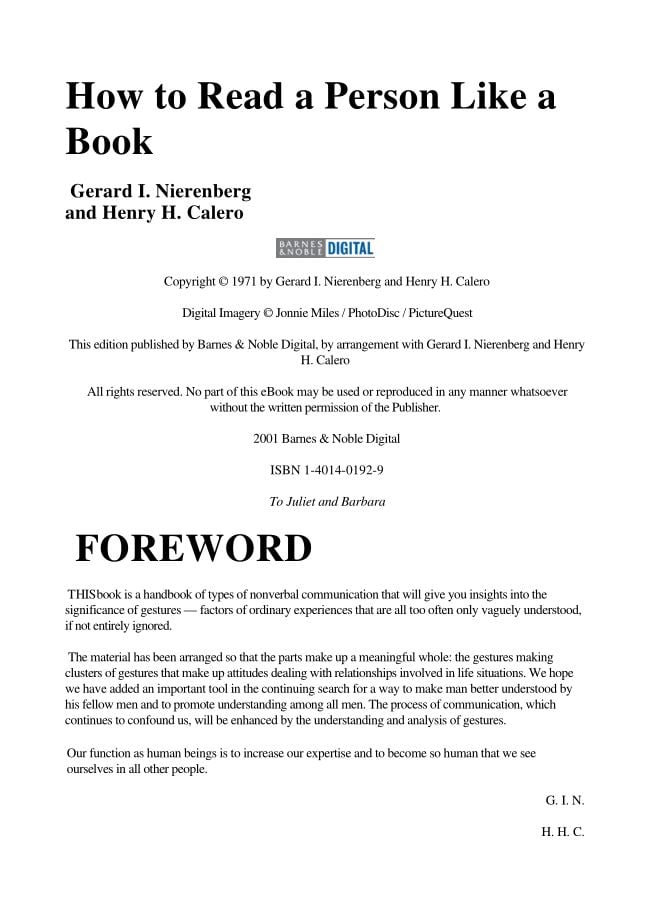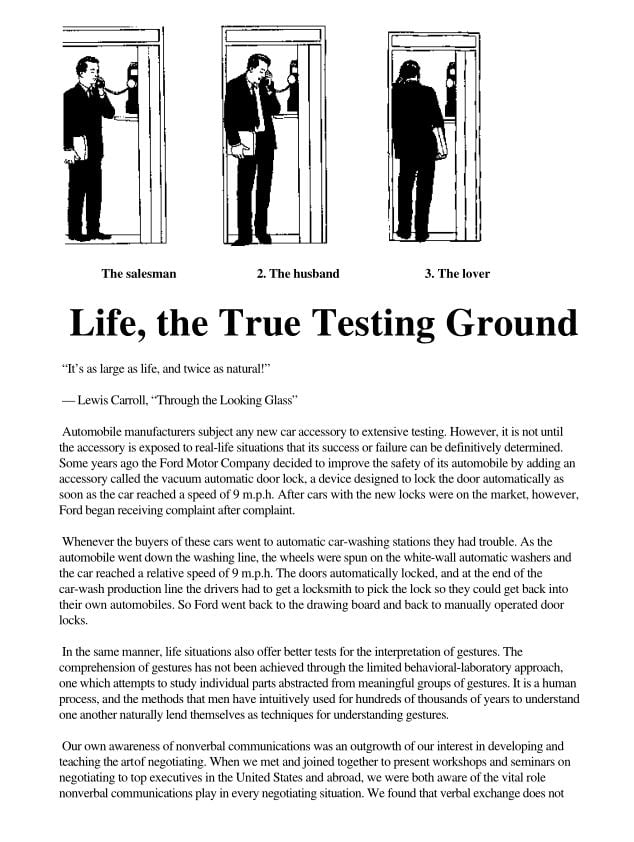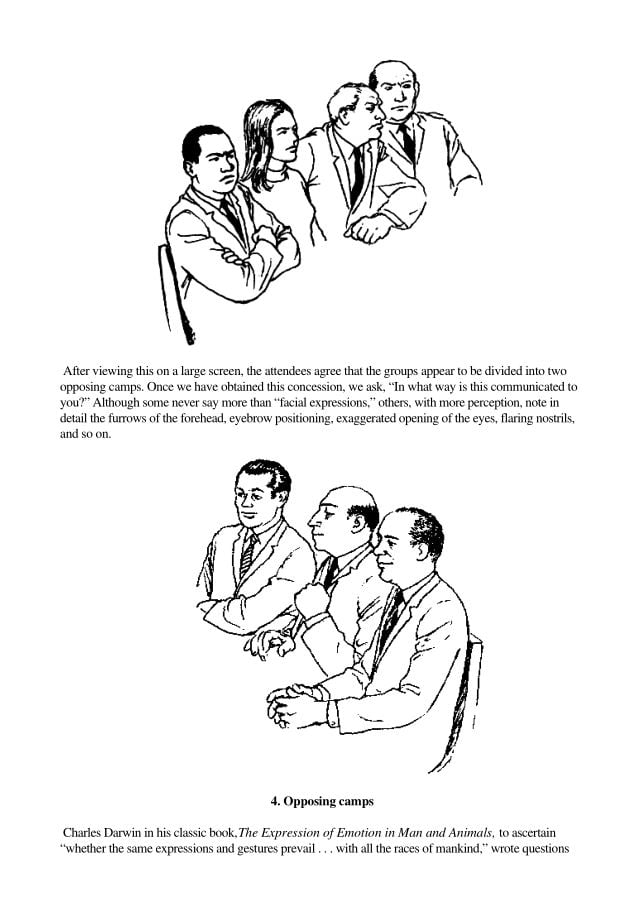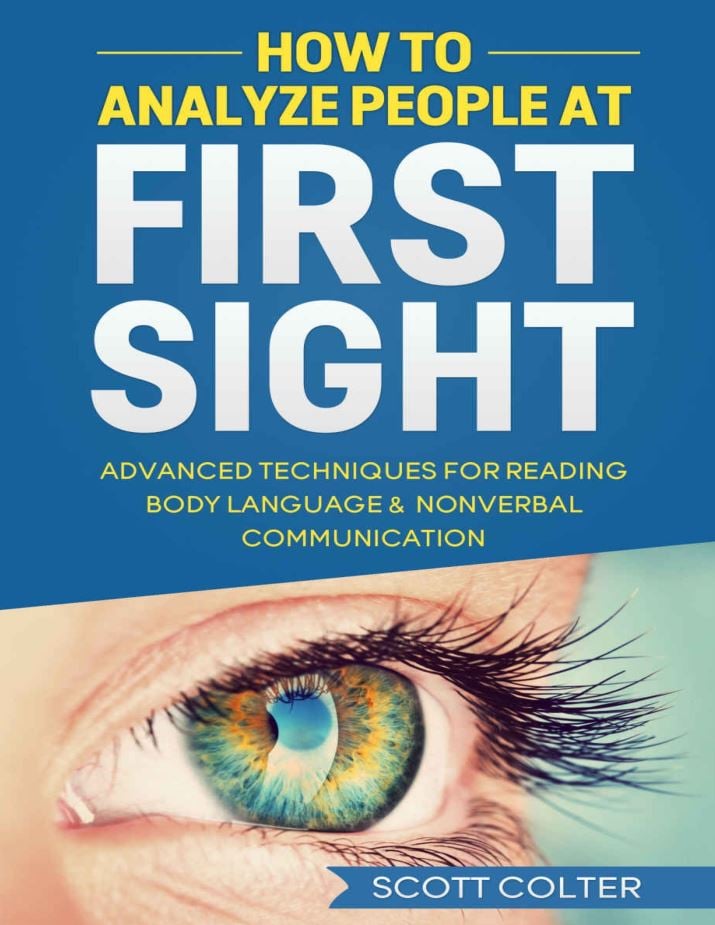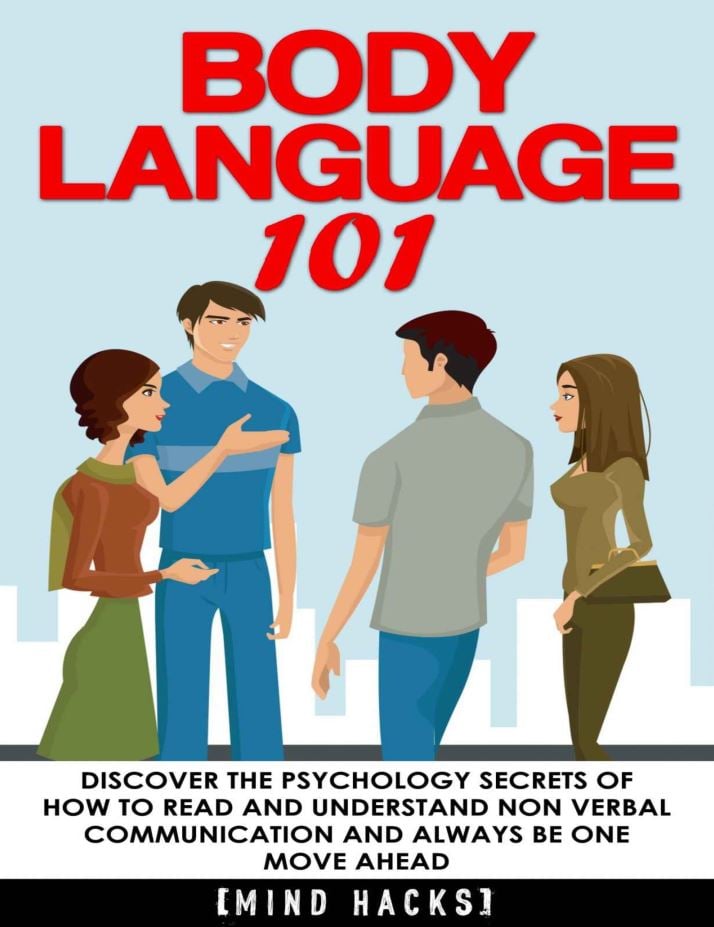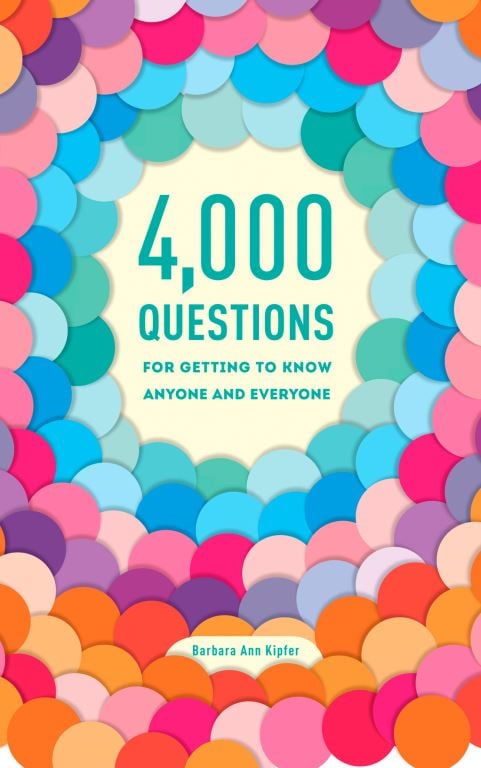How to Read a Person Like a Book
On Sale
$4.00
$4.00
How to Read a Person Like a Book
Gerard I. Nierenberg
and Henry H. Calero
FOR READING GESTURES
“Learning is acquired by reading books, but the much more necessary learning, the knowledge of
the world, is only to be acquired by reading men, and studying all the various editions of them.”
— Lord Chesterfield, “Letters to His Son”
ANairport is an excellent spot for viewing the entire human emotional spectrum. As travelers arrive and
depart, you can see the woman who is very apprehensive about flying pinching the fleshy part of her hand
for reassurance, as if she were saying to herself, “It’s going to be all right.” In the same manner people
say, “I had to pinch myself to make sure that it wasn’t a dream.” A male waiting for departure time may
also be unsure about flying. However, he is sitting in a rigid, upright position with his ankles locked. His
hands are clenched together, making one big fist, while he rhythmically massages one thumb against the
other on top of his interlocked hands. These gestures indicate a nervous attitude.
Walking away from the departure area, you see three men in telephone booths. One of them (Figure 1)
is standing with his body at attention. His coat is buttoned. He gives the impressionthat whoever he is
talking to is very important to him. He might be a salesman talking to a customer on the telephone as if he
were actually in his presence.
The second caller’s body is relaxed (Figure 2). He slouches over, shifts his weight from foot to foot, and
rests his chin on his chest. He appears to be looking at the floor and nods his head as if saying, “Yeah,
yeah.” Reading this person further, you get the impression that he is comfortable but possibly bored with
the conversation and attempting to hide the fact. The receiver of the call can be taken for granted. It is
probably his wife or an old friend.
From these clues, can you visualize how a third caller might look as he talks to his girlfriend? This caller’s
face is hidden. His hunched shoulder may be concealing it from view or his body may be completely
turned away from passers-by. His head is probably tilted to one side, and he handles the phone as if it
were the object of his affection (Figure 3).
As you move toward the baggage-claim area, you may see a family group, which you can identify by the
striking similarity in the way they all walk. Others on their way to the baggage-claim counter who have
been met by family or friends usually appear the happiest and walk with a great deal of enthusiasm.
Those who are waiting to be met keep rising on their toes and looking around.
Gerard I. Nierenberg
and Henry H. Calero
FOR READING GESTURES
“Learning is acquired by reading books, but the much more necessary learning, the knowledge of
the world, is only to be acquired by reading men, and studying all the various editions of them.”
— Lord Chesterfield, “Letters to His Son”
ANairport is an excellent spot for viewing the entire human emotional spectrum. As travelers arrive and
depart, you can see the woman who is very apprehensive about flying pinching the fleshy part of her hand
for reassurance, as if she were saying to herself, “It’s going to be all right.” In the same manner people
say, “I had to pinch myself to make sure that it wasn’t a dream.” A male waiting for departure time may
also be unsure about flying. However, he is sitting in a rigid, upright position with his ankles locked. His
hands are clenched together, making one big fist, while he rhythmically massages one thumb against the
other on top of his interlocked hands. These gestures indicate a nervous attitude.
Walking away from the departure area, you see three men in telephone booths. One of them (Figure 1)
is standing with his body at attention. His coat is buttoned. He gives the impressionthat whoever he is
talking to is very important to him. He might be a salesman talking to a customer on the telephone as if he
were actually in his presence.
The second caller’s body is relaxed (Figure 2). He slouches over, shifts his weight from foot to foot, and
rests his chin on his chest. He appears to be looking at the floor and nods his head as if saying, “Yeah,
yeah.” Reading this person further, you get the impression that he is comfortable but possibly bored with
the conversation and attempting to hide the fact. The receiver of the call can be taken for granted. It is
probably his wife or an old friend.
From these clues, can you visualize how a third caller might look as he talks to his girlfriend? This caller’s
face is hidden. His hunched shoulder may be concealing it from view or his body may be completely
turned away from passers-by. His head is probably tilted to one side, and he handles the phone as if it
were the object of his affection (Figure 3).
As you move toward the baggage-claim area, you may see a family group, which you can identify by the
striking similarity in the way they all walk. Others on their way to the baggage-claim counter who have
been met by family or friends usually appear the happiest and walk with a great deal of enthusiasm.
Those who are waiting to be met keep rising on their toes and looking around.

